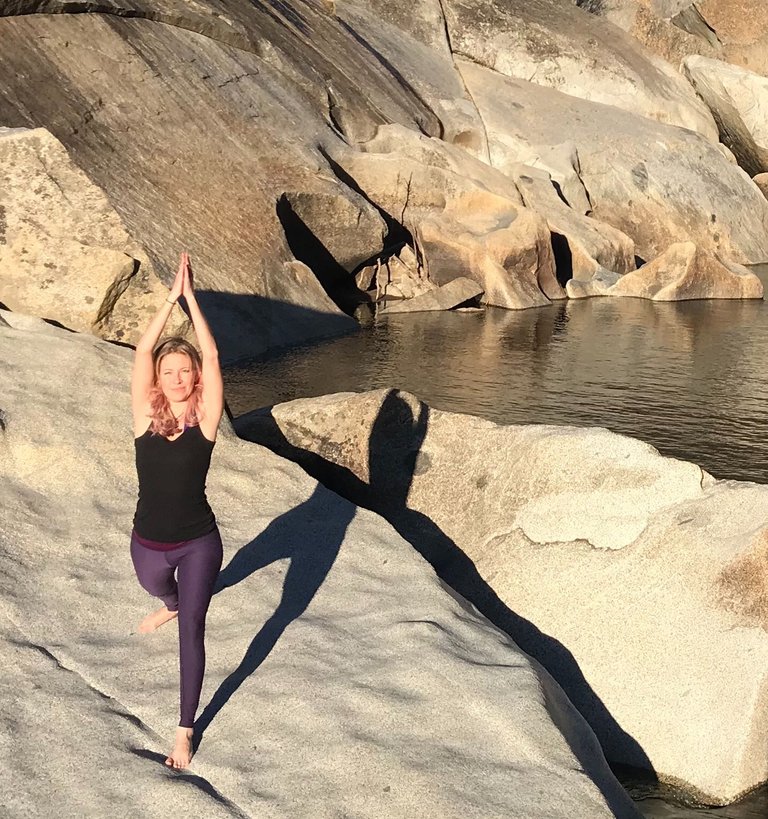
If you’ve ever taken a yoga class, or even just heard about yoga, you have heard “Warrior Pose”, right? Then you get more involved and hear that there isn’t just one warrior! There’s Warrior 1, then there’s Warrior 2, then............ Warrior........ yeah....3........
 )
)SO...WHAT’S UP WITH THE WARRIORS!!??
Most likely you are not familiar with the tragic love story behind this pose. But fear not! I’m here to fill you in on it!
 )
)This is a story of love, hate, rage, violence, sadness, wrath, compassion and forgiveness that begins with the marriage between Lord Shiva and his bride Sati.
Shiva was an unorthodox god; he had dreadlocks, smoked weed, spent a lot of his time meditating on mountain tops and in graveyards whilst smeared with the ashes of the dead. Sang and danced at will, and it is said that he carried around a skull.
 )
)Sati’s father was the powerful King Daksha, who did not approve of the union. Shiva was very much the antithesis of King Daksha who thrived on rules and regulations and was a preserver of traditional society.
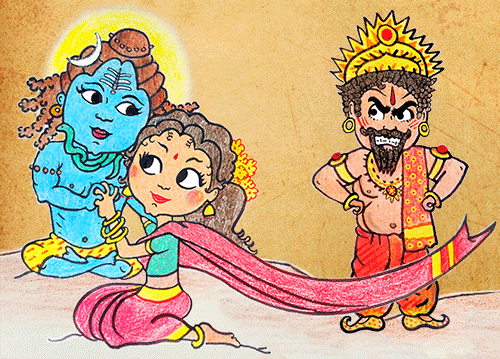 )
)Well, Sati married Lord Shiva anyways and they left to live in the PleasureCity, Bhoga, on MountKailash. Sometime later King Daksha decided to hold a huge event known as a Yagna (a ritual sacrifice) to which he invited all heavenly creations, deities and dignitaries… with the exception of Lord Shiva and his own daughter, Sati.
Sati got really offended when she heard about the party, and insisted that they should go. Shiva didn’t care for social approval so he told Sati to go if she really wanted to.
At the gathering her father refused to speak to her and then humiliated her in front of all the guests, by mocking her husband and then asked her why she married “The Lord of the Beasts”.
While all the guests stared and laughed at Sati, she was so angry at her father that she told him she didn’t want to have any ties with him and added “Since you have given me this body I no longer wish to be associated with it”.
She then sat down on the floor, went into a meditative trance and, by way of yogic exercises, began to increase her inner fire until such a point that she burst into flames and died.
 )
)The Wrath of Shiva
Shiva gets notified of his wife’s violent death. He was so deeply saddened and enraged at his loss that he tore off his clothes and ripped out his dreadlocks. Legend has it that Shiva then picked up one of his dreadlocks from the floor and threw it down to the earth to create “Virabhadra” (Vira meaning hero and Bhadra meaning friend).
Shiva ordered this warrior demon, Virabhadra, to go to the Yagna and kill everyone, behead King Daksha and drink his blood.
It is here where we really see the links between this story and the poses that we see commonly in modern yoga classes known as Warrior (Virabhadrasana) I, II and III.
Virabhadrasana I
According to the ancient texts Virabhadra entered the Yagna coming up from deep underground with his sword held over his head in both hands – a feat re-enacted in the posture Virabhadrasana I.
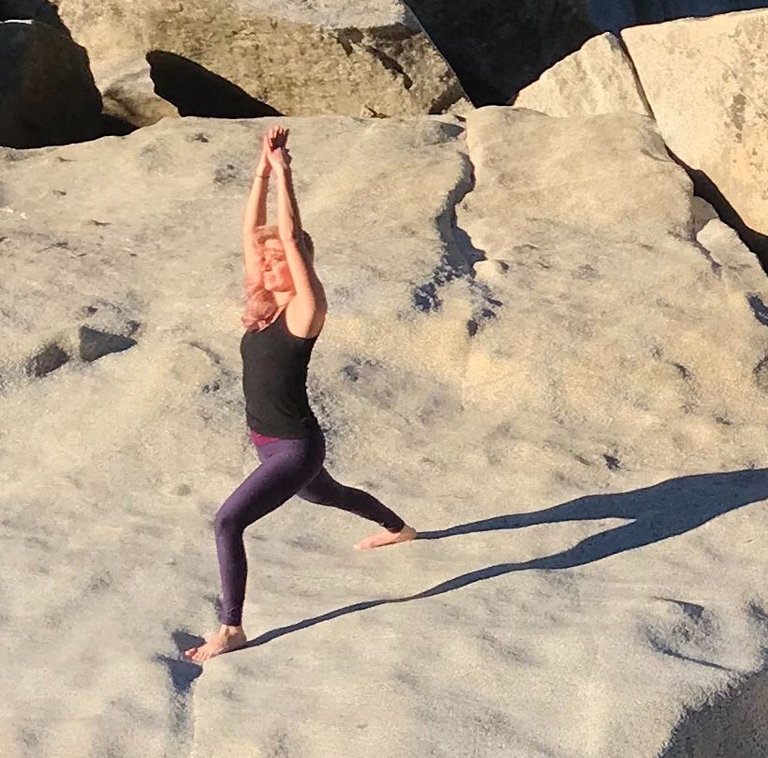
Virabhadrasana II
Next, Virabhadra made his presence known to the Yagna guests by standing with his sword poised and ready to strike. Essentially the posture Virabhadrasana II represents Virabhadra having his victim locked in (consider the drishti point of the middle finger as the crosshairs and the back arm is the sword ready to strike forward).
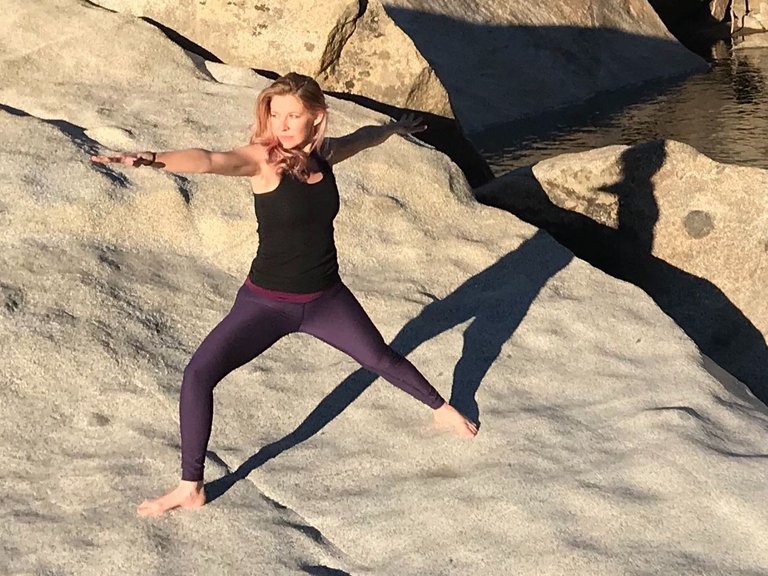
Virabhadrasana III
Finally Virabhadra, as instructed by Shiva, quickly and precisely striked and severed the head of King Daksha. This scene is represented by Virabhadrasana III.
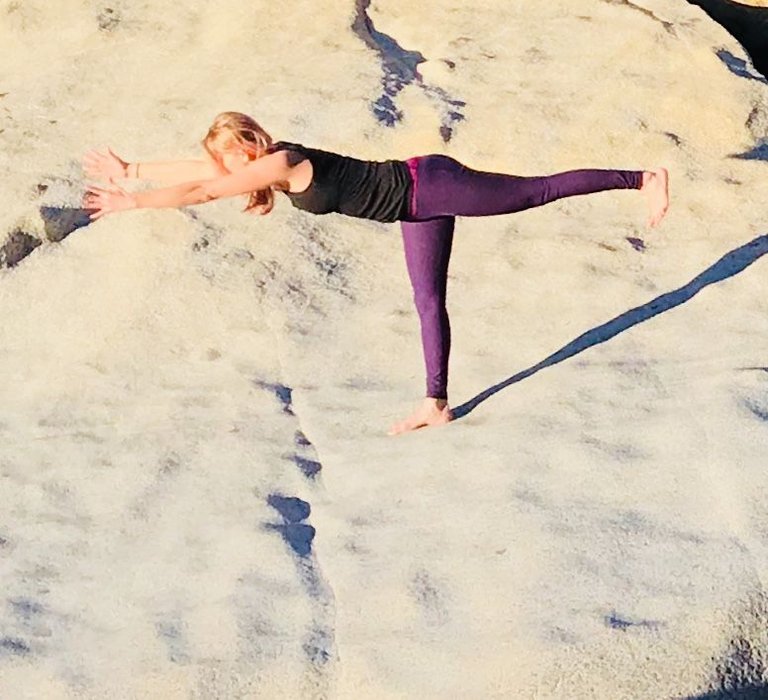
What happened next…
Shiva arrived at the Yagna and absorbed Virabhadra back into his own form. Seeing the death and destruction before him, Shiva was no longer enraged but instead filled with sorrow.
He then showed compassion to his father in law by finding the headless body of the King and giving him a new head (the head of a goat) before bringing him back to life. This prompted Daksha to bow to Shiva and call him “the kind and benevolent one”.
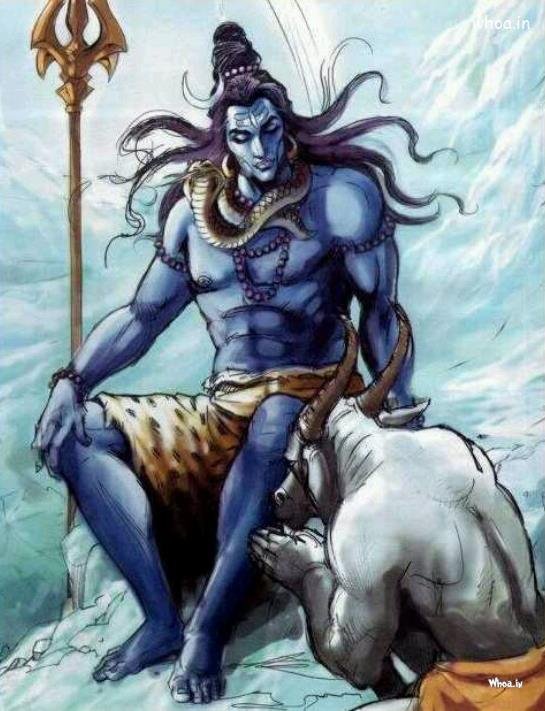 )
)Shiva then picked up his wife’s ashes and left the Yagna to return to a life of solitude.
Sita was reborn as Parvati, daughter of Himavat, king of the mountains, and his wife, Mena. This time, she was born the daughter of a father whom she could respect, a father who appreciated Shiva ardently. Naturally, Parvati sought and received Shiva as her husband.
The Moral of the Story
This story can be viewed as Shiva and his incarnation, Virabhadra, as representing the higher self at battle with the arrogant ego (Daksha) in the name of love and the heart (Sati).
It represents our posture as fallible souls who engender completely natural human responses to emotions.
There is often an innate urge to overlook natural human emotions like anger, jealousy, and bitterness in spiritual pursuits like yoga.
At times, we think that in the interest of becoming of true yogi, we must be devoid of all negativity. But being a “yogi” isn’t about existing in a permanently blissful state. Eliminating all hardship from our lives just isn’t feasible. And, we all engage in little battles throughout the day. Every single relationship produces complications and stress that engender completely natural human responses.
We become true warriors when we understand how to fight our battles with the proper weapons. Along with the extraordinary range of emotions we exhibit as humans, we also have the unbelievable capacity for reflection.
And so, when our battles scale beyond our control, we possess the most important tools of the “spiritual warrior” which are compassion and forgiveness.
I hope you enjoyed this story!
Namaste

Informative post thank you.
I cant stand hot yoga. It makes me feel like im getting heat stroke and I get dizzy and walk out wanting to vomit.
Room temp is enough for me.
Wish there was a freezing point yoga. That would be perrrrfect.
Thank you for your comment. This post isn't about hot yoga.... There are plenty of yoga practices that do not heat up the room. You should try that if you don't like bikram.
Yes we enjoyed the story a lot . We have thee positions in Tang soo do (Korean traditional martial art) with different names. To be honest they may have the same explanation with yoga but I only know the Korean names and not the meaning in English.
Resteemed
Thank you giosou, I did a quick search and seems like Tang soo do was founded in the 1940's, so it's not surprising that some poses may be similar. A lot of poses in modern yoga come from British gymnastics and as the practice has evolved and got met by new cultures and times we see more and more poses that probably the ancient gurus never did. However all these stories come from the ancient texts and the poses get named after those.
Fascinating... seems like all this Yoga Hindu stuff is symbolic for deep and real physiological (and spiritual) dynamics. Hindu stuff and yoga... are things I've neglected to dive into and I've spent most of my life interested in "western" esoteric/occult info and things, but more and more I keep encountering these neat little bits of compelling Eastern stuffs. Thanks for posting (and for writing so well that I can absorb the story and info easily) @val.halla. :)
Oh for sure! Yoga is so much more than the poses we do in class. It's a whole philosophy, super interesting and eye opening and I agree that there are so many psychological aspects to it. I'm glad you liked the post!
Nice story. Please check out my blog. Thanks 🙏🏽
I prefer hot yoga because it is good for weight loss ....Nice post @val.halla
Hi Thank you for your comment. Hot yoga is no better hatha or vinyasa for weight loss. Some think that because you sweat a lot due to the high temperature in the room. But just drink some water and you'll get that weight back.
That being said, I personally don't like hot yoga because I think it is an easy way to injure yourself. In high temperatures the joints become very lose and we think we've gained flexibility, then we stress the ligaments and tendons too quickly, sometimes to a degree they are not ready for, and when you return to normal temperature and you cool down you could potentially have some injury. A lot of people love it tho, just practice with caution and awareness of your limits.
Wow,I love yoga but I never thought to look into the positions story but I will do that from now on:)wonderful story
Glad you liked it! There are some really cool stories! I'll keep posting about them :)
Can`t wait:)
Boom! Well said not actually hear this story! A good one not the less, thanks for sharing. A great moral to be shared :) 💯🐒
=D
Wow great post. I just started doing yoga in the last couple months and love it. Tons of information. Really enjoyed learning something new. Thanks.
Happy to hear this was useful!! Keep up the yoga! it loves you too!